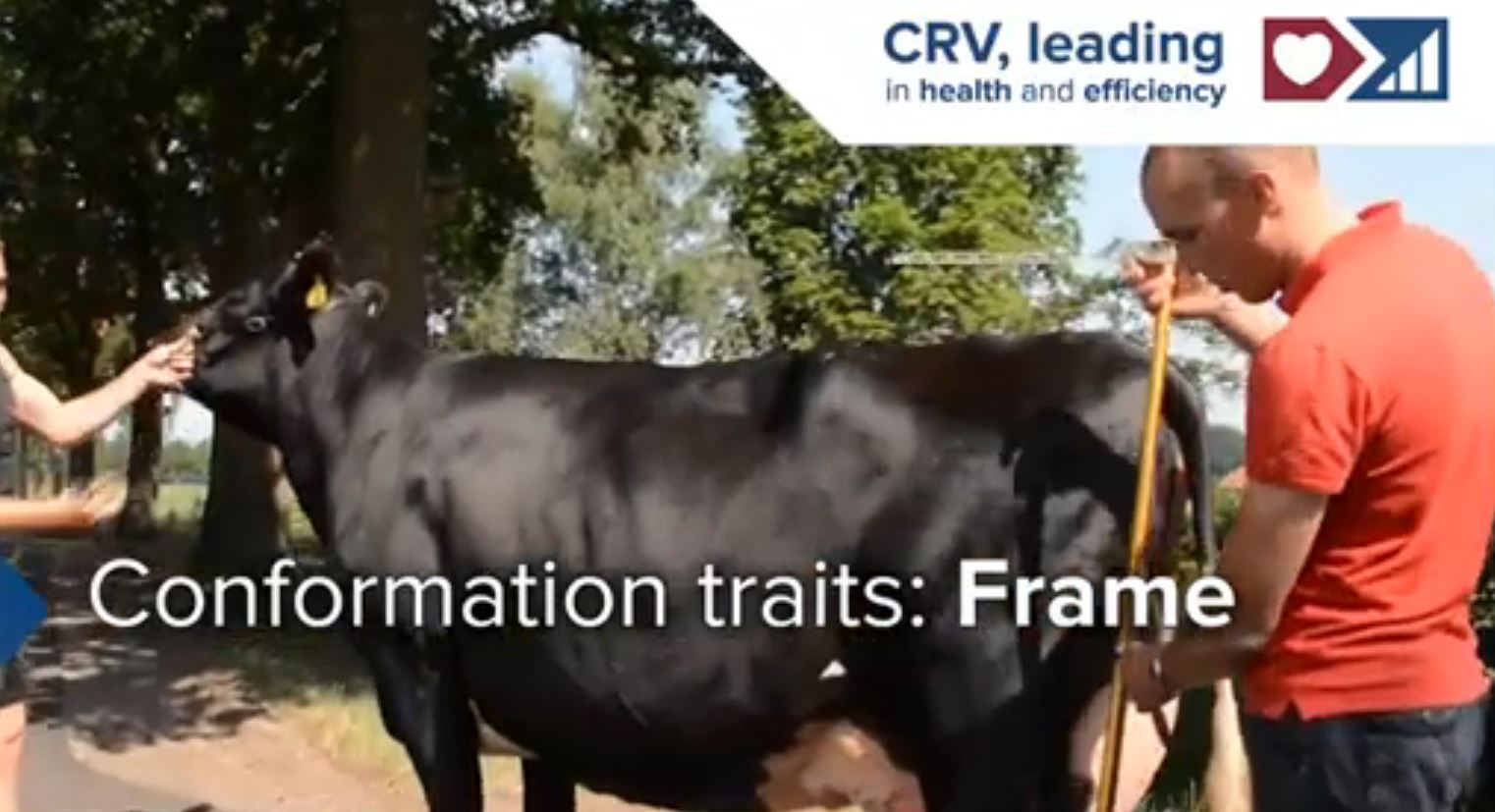The linear traits consist of 19 traits that meet the international approved standards for type assessment and classification reports. The traits are recorded using scores on a scale of 1 to 9, except for stature, which is measured in centimetres and inches. The linear traits are descriptive, in other words, they are observations that indicate the appearance of the cow. What these traits actually do is create an ‘image’ of the cow expressed as a numerical score. The scores are not a value judgement.
Conformation and it’s role in breeding

Conformation plays a very important role in breeding. A cow's appearance and build are also indicators of its potential to achieve high lifetime production. Animals that score well for conformation traits often have a longer healthy and productive life. And, we all like animals that are pleasing to the eye!
CRV herdbook classifiers assess and score heifers based on linear traits and linear composite indexes. The linear traits describe the individual traits, the linear composite index describes the general characteristics or combined traits.
Linear traits
Linear composite traits
In the linear composite traits, conformation is divided into: frame, dairy strength (type), udder and feet and legs. Contrary to the linear traits, these composite traits are a value judgement. The linear composite traits indicate the extent to which the cow corresponds to the classification standards. For scoring, the classifier uses a scale of 71 to 99 points.
The scores are categorised into grades which are then awarded to the animal. The population average is 80 points. The conformation score for heifers cannot be higher than 89 points. Cows can be classified again when they are older and be awarded a score of 90 points or higher (excellent). To merit 90 points or higher, the cow must be at least 48 months old and have calved twice.
The linear composite covers the following traits:
- Frame: the functional build and capacity of the animal.
- Dairy strength: this is determined by the linear traits body condition, body depth, chest width and rump width
- Udder
- Feet and legs
- General conformation
Cows that produce 100,000 kg of milk score higher than average for conformation.
Cows that have produced 100,000 kg of milk or 10,000 kg of fat and protein score higher than average for conformation. The average score of these high achievers for lifetime production is 82 to 82.5 points. These cows have high scores for udder and legs in particular. This shows that above average conformation therefore contributes to above average production.
Video series classifying cows
In order to breed the ideal, desired cow some knowledge and skills of classification are essential. And, learning to look at cows in this way will also help in your daily herd management. By paying attention to the right details, you are more likely to notice whether a cow is ill or experiencing any problems.
In cooperation with JVC Overijssel-Flevoland, CRV has developed a series on classifying cows. Watch the first part of this series:
